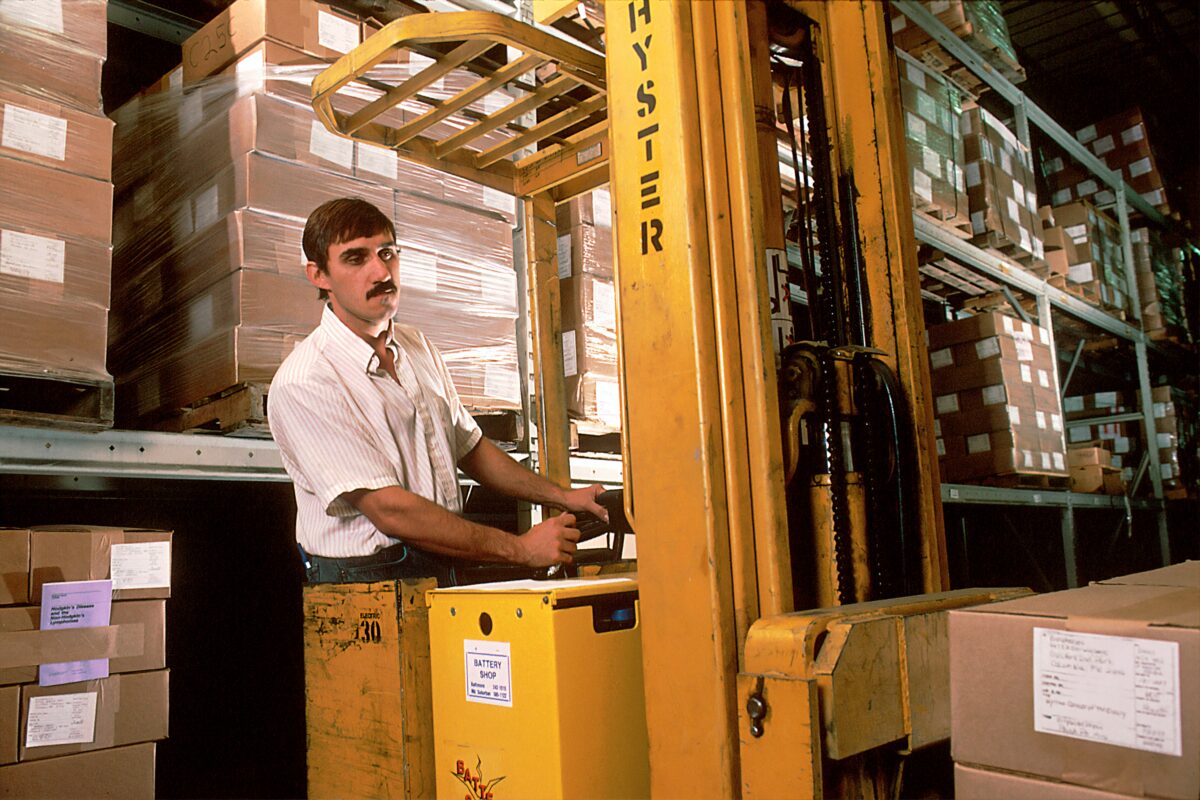In order to prevent (or better say minimize) working hazards, it is not enough to remove all hazardous situations. Businesses also need to train their employees to follow best practices to reduce the likelihood of an accident. Hiring specialists can help to analyze business’ management policies and find best ways to improve workers’ safety. Business owners need to keep their warehouses clear of hazards by carefully analyzing the entire supply chain and adding new procedures and technology, and as the working environment becomes better for employees, their work can become more accurate and it can shorten delivery times.
Warehouse is an industrial facility. It receives and stocks products and ships them to other locations. This job seems composed of easy, non-hazardous operations, so people develop a false sense of safety. Actually, a warehouse is a busy place and injuries are inevitable, so a good safety program is very well needed. Warehouse management must do more to protect employees. Statistical analysis shows that certain operations present greater hazards than others, like working on docks, in charging stations and materials storage, working with powered industrial trucks and conveyors, and performing manual lifting/handling. Serious problems also include inadequate fire safety provisions, chemical exposure, improper use of lockout procedures, lack of ergonomics and failure to wear personal protective equipment.
Manual handling
Frequent types of injuries due to manual material handling are back and shoulder injuries. Thus lifting, lowering, pushing, carrying etc. are handling techniques that a proper safety program needs to bring attention to. Also, hand traps can occur while setting down heavy boxes, working near pulleys in conveyor belts, adjusting lift truck forks, shutting trailer doors; and manually handling product, etc. “When workers handle too much weight, perform a task too often or outside the optimum mid-level range, move an object too far, or perform any combination of those activities, the risk of low back pain rises,” says Wayne Maynard, product director and ergonomics expert, at the Liberty Mutual Insurance Company, Boston. By adding handles to containers, manual lifting can be eased. Employees should be trained in proper lifting techniques (bend at the knees, keep close to the load, use the arms and legs to lift).
Mechanical handling and dock maintaining
Another important set of activities that needs to be addressed in a safety program. The severity injuries caused by powered industrial trucks, forklifts and such, is much greater than overexertion. Warehouses should pay attention to the loading dock area. There is a risk of employees and visitors falling off a dock. Also, a piece of powered equipment may drive off a dock, due to operator error or due to contact with a slippery surface. To enhance dock safety, certain steps can be undertaken. Paint the edge with strong colors for better visual perception, follow OSHA specifications, inspect the fire extinguishers, allow only trained, authorized employees to operate powered hand trucks or hand jacks (if you don’t have trained employees, consider forklift hire), clean out dock areas periodically, inspect trailer floors, install dock plates with non-skid surfaces, inspect trailer wheels to make sure they are properly located and locked-in-place, etc.
Prevention of fire and chemical injuries
Have automatic system installed in your warehouse. You must make sure that your products can be extinguished if there is a fire hazard. Inspect the fire prevention system, store flammable products properly, performs annual fire drills and emergency evacuation, train employees in basic principles of firefighting, maintain fire alarms and smoke detectors. Also, for example, a forklift may puncture a container holding hazardous chemicals, which leads to chemical exposure. Provide information for chemicals in the warehouse, develop a spill control plan and provide spill clean-up kits, store chemicals safely, monitor and control carbon monoxide exposure and, if possible, use battery-powered lift trucks instead of those propane-powered.
Ergonomics improvements are there to make your employees’ jobs easier. Store heavy materials on shelves so that the lifting would take place between the knees and chest (use powered equipment for shelving), install and maintain proper overhead lighting and ventilation (proper amount of air exchange must be enabled because of all the vapors, fumes, gases, mists and dust)
Personal protective equipment (PPE) must be worn and employees must be informed about the proper PPE selection, use and maintenance. Hard hats, foot protection (steel-toe shoes) for those operate pallet jacks or stock chasers, eye and face protection preventing small, sharp particle injuring one’s eyes, gloves and hearing protection.
Materials storage in a warehouse is essential, because the building where products are being brought in, stored and later brought out. Make sure that products don’t impose risks to employees. Inspect pallets as they arrive and remove those in bad condition, stack them evenly and in balance, shrinkwrap them in plastic and place protective post to prevent damage in transport. For their safe transport – provide enough space for safe truck maneuver, clean all floor surfaces of ruts and debris and store products on shelves, not on the floor.
Protect your workers and you will also protect your business. Have safety inspections conducted by an expert who can develop and improve the safety plan. The person who conducts the inspections should have the authority to implement prompt corrective measures. As the environment safer better for employees, they can work more efficiently due to feeling carefree.













